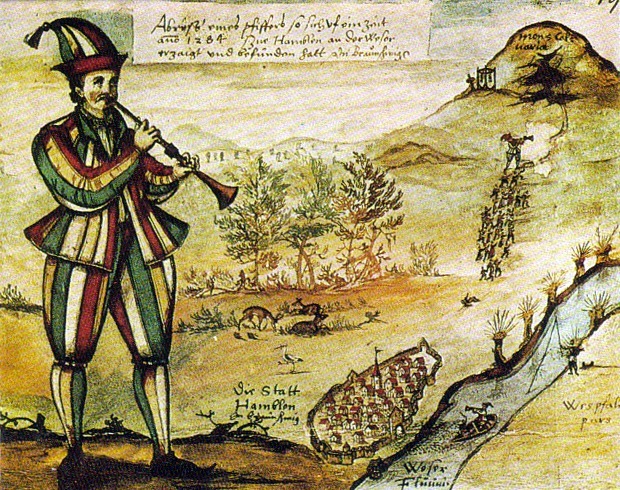The story of the Pied Piper of Hamelin is well known.
This dark European folktale with unsettling themes of ingratitude and terrible vengeance has been told and retold for generations.
Life in Hamelin became a nightmare.
The very next day a mysterious man in bright colorful clothing arrived in town.
The Pied Piper then took out a small fife from his pocket and began to play a tune.
Enraged, the Piper stomped out of town but not before swearing revenge.
This time time it wasnt rats or mice but the towns children who came running and dancing towards him.
The swarm followed him into the mountain where he disappeared along with the children.
A total of one hundred thirty children were lost that day.
But the tale is much more than fiction.
The date appears again in Hamelins town chronicle.
Against the year 1384, the entry simply said, It is 100 years since our children left.
The oldest picture of the Pied Piper copied from the glass window of the Market Church in Hamelin.
Accounts of the tale began to appear in subsequent centuries, with the story remaining invariably the same.
The central character of the story, the Piper, was common in medieval times.
Pipers were often employed to lead civic celebrations.
Most pipers lived a vagrant life and were often troublemakers.
The original tale didnt include rats.
What really happened?
But the theory does not explain why the story is set so firmly in Hamelin.
Besides the Children’s Crusade occurred some seventy years before the alleged incident in Hamelin.
Historian Jurgen Udolph believes that many residents from Hamelin wound up in what is now Poland.
Landlords often employed certain characters called lokators who roamed northern Germany trying to recruit settlers for this purpose.
Like a medieval piper, some of them were brightly dressed and all were silver-tongued.
A 14th century portrayal of a lokator (with a special hat).
In the upper panel he is shown receiving the foundation charter from the landlord.
The settlers wipe the forest and build houses.
In the lower panel, the lokator acts as the judge in the village.
Folktales of rat-catchers are also abound in Germany.
No music is played in this street today as a gesture of respect to the towns lost children.
In addition, each year the city marks June 26 as “Rat Catcher’s Day”.
Photo credit:Plum leaves/Flickr
A rat tile on the streets of Hamelin.
Photo credit:Taylor Sargeant/Flickr
Sculpture of the Pied Piper in Hamelin.
Photo credit: hydebrink / Shutterstock.com





